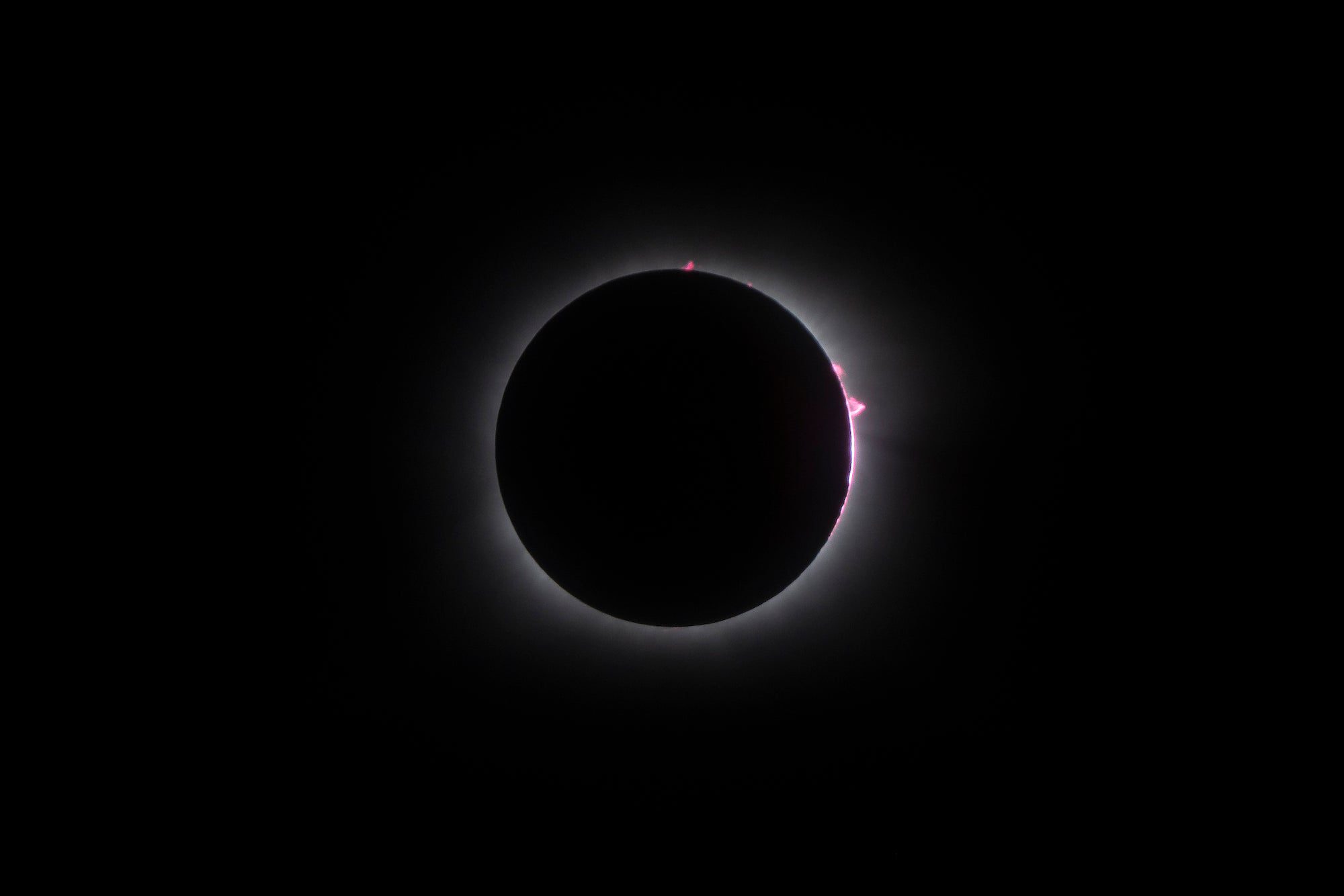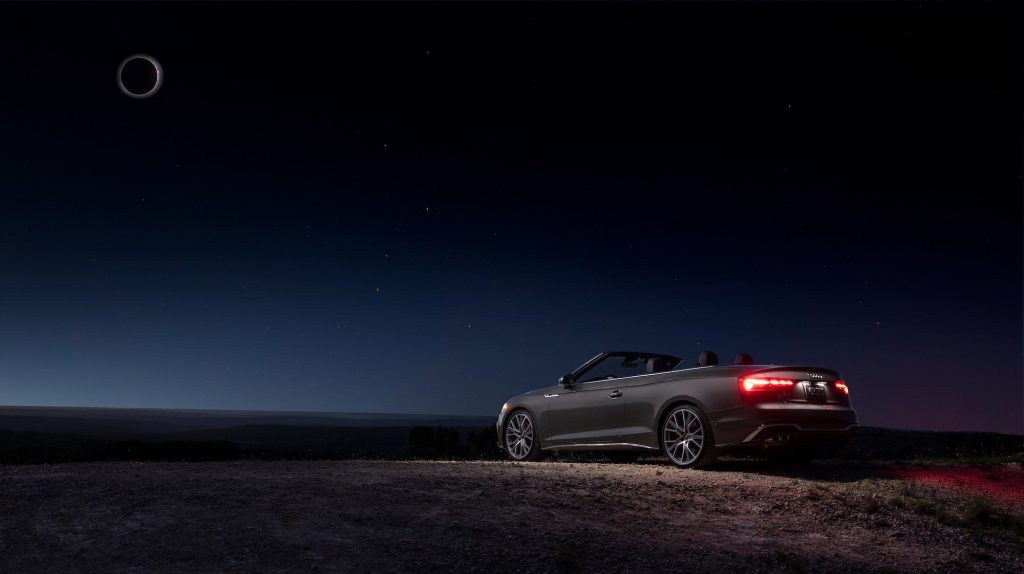NASA’s Heliophysics Division of the Science Mission Directorate studies the sun and its impact on the Earth, atmosphere, and magnetosphere, which serves as a protective barrier against solar wind and radiation. With the total solar eclipse creating a buzz in the United States, NASA is the focal point for the most intriguing research and historical information about this natural event.
Today, the sun is attracting more attention than usual, with “eclipse parties” in full swing and stands selling eclipse-themed merchandise and cardboard viewing glasses along the path of totality. Dr. Kelly Korreck, a heliophysicist and lead for NASA’s eclipse project, provided insights into this captivating celestial event and offered advice on the best locations for viewing.
We inquired with Dr. Korreck about the suitability of watching the eclipse from a convertible (specifically, a tech-focused Audi S5 Cabriolet), and she confirmed that it would be very appropriate. Aside from safety glasses and an unobstructed view of the sky, all that is required is a comfortable spot to sit back and enjoy the spectacle.
As we waited for the clouds to clear, our photography team felt some apprehension. We caught glimpses of the eclipse as the moon cast its shadow, but would the sky clear completely? The answer would soon unfold.
An eclipse brings along a plethora of scientific observations
If the moon’s shadow doesn’t excite you, consider this: Albert Einstein presented his theory of general relativity in 1915, but it was not validated until the total solar eclipse of 1919, when Sir Arthur Eddington and his team measured the impact of the sun’s gravity on starlight.
Dr. Korreck has been fascinated by the sun, the largest star in our universe, for a long time, even before she earned her doctorate. Solar eclipses have long been utilized by scientists to make significant discoveries, she mentioned. For instance, eclipses led to the first discovery of helium, and this event will continue to provide scientists with the opportunity to examine the sun’s influence on the ionosphere. Disturbances in the ionospheric layer can affect our GPS navigation systems and communications, particularly radio waves.
In this context, we tested the Audi S5’s unique Bluetooth-connected seatbelt microphones, which enable clear conversations even with the top down. Three tiny microphones are integrated into the outward-facing side of the seatbelt, enhancing interactions with someone as noteworthy as a NASA heliophysicist. We also monitored the S5’s GPS system, which remained unaffected.

Eclipses occur approximately every 18 months somewhere in the world, but in the same location only every 400 to 1000 years, as Dr. Korreck informed us. In fact, the last total solar eclipse in Austin, Texas took place more than 600 years ago, in 1397. Austin did not even exist at that time. The next one will not occur until 2343, long after we are no longer here.
"Any particular town or city usually only experiences an eclipse once every 400 to 1,000 years," Dr. Korreck explains. "So it's very rare to witness one in a specific location, but somewhere on Earth is experiencing this special dance, this special alignment of the planets."
This specific total eclipse is uncommon because it's happening during the period of "solar maximum," when the sun is most active. There's even a chance to see "streamers," which NASA says will resemble bright, pink curls or loops coming from the sun. Heliophysicists (and the entire scientific community) are excited about this eclipse, due to the duration and the strength of the sun's magnetic field during this time.
"We're at four and a half minutes for this eclipse," Dr. Korreck says. "It was only two and a half minutes at most in 2017, but it'll be around six minutes in 2045. So we have more to look forward to in 20 years."
It's more than just a visual occurrence
When the moon comes between the sun and the Earth, the temperature outside can rapidly decrease – up to 10 degrees. I turned on the heated headrest, which blows warm air onto my neck; a welcome feature when you're chilly. In Texas, it's hot more often than it's cold, so typically I'd use the cool setting to emit cooling air instead. During an eclipse, the shroud of shadow blocking the sun removes heat quickly. So the sky darkens, the temperature drops, and there's even a noticeable sound component.

"We translated the bright light of the sun to a flute sound," Harvard astronomer Allyson Bieryla told CNN on Friday. "Then it transitions to a midrange, which is a clarinet, and then during totality, it kind of shifts to a low clicking sound, and that clicking even slows down during totality."
That doesn't even include the chirps, croaks, whines, and other sounds of the animal and insect kingdom as they respond to the unusual change of light during the event.
"I think in general, an eclipse is such a full body experience," Dr. Korreck says. "It gets colder, the light changes, the shadow becomes a bit sharper. It's a way to truly experience a celestial event more than just visually. Take some time to really enjoy it and take advantage of the special alignment that we have."
As the moment of totality approached, nearby horses brayed and dogs barked, as if it were truly twilight. And then it happened: The clouds parted and the sky grew dark, the animals quieted, and a stillness blanketed the landscape. We could see solar flares peeking from behind the corona, and Venus appeared below the sun. Outside of the S5 Cabriolet, the car's headlights and taillights cast a signature pattern. For a couple of minutes, time stood still, and then daylight crept in again. It's something I'll never forget.









